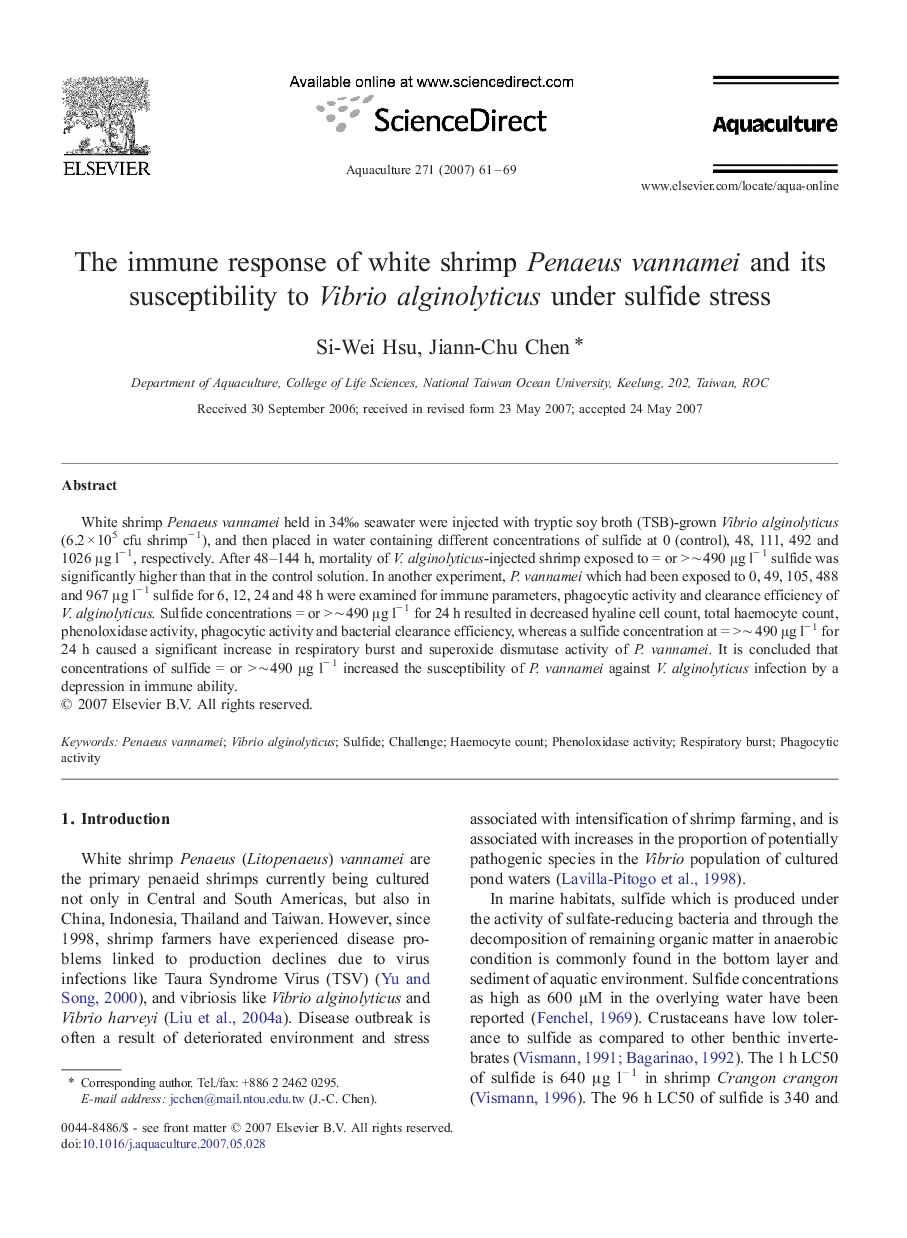| Article ID | Journal | Published Year | Pages | File Type |
|---|---|---|---|---|
| 2425130 | Aquaculture | 2007 | 9 Pages |
White shrimp Penaeus vannamei held in 34‰ seawater were injected with tryptic soy broth (TSB)-grown Vibrio alginolyticus (6.2 × 105 cfu shrimp− 1), and then placed in water containing different concentrations of sulfide at 0 (control), 48, 111, 492 and 1026 μg l− 1, respectively. After 48–144 h, mortality of V. alginolyticus-injected shrimp exposed to = or > ∼ 490 μg l− 1 sulfide was significantly higher than that in the control solution. In another experiment, P. vannamei which had been exposed to 0, 49, 105, 488 and 967 μg l− 1 sulfide for 6, 12, 24 and 48 h were examined for immune parameters, phagocytic activity and clearance efficiency of V. alginolyticus. Sulfide concentrations = or > ∼ 490 μg l− 1 for 24 h resulted in decreased hyaline cell count, total haemocyte count, phenoloxidase activity, phagocytic activity and bacterial clearance efficiency, whereas a sulfide concentration at = > ∼ 490 μg l− 1 for 24 h caused a significant increase in respiratory burst and superoxide dismutase activity of P. vannamei. It is concluded that concentrations of sulfide = or > ∼ 490 μg l− 1 increased the susceptibility of P. vannamei against V. alginolyticus infection by a depression in immune ability.
